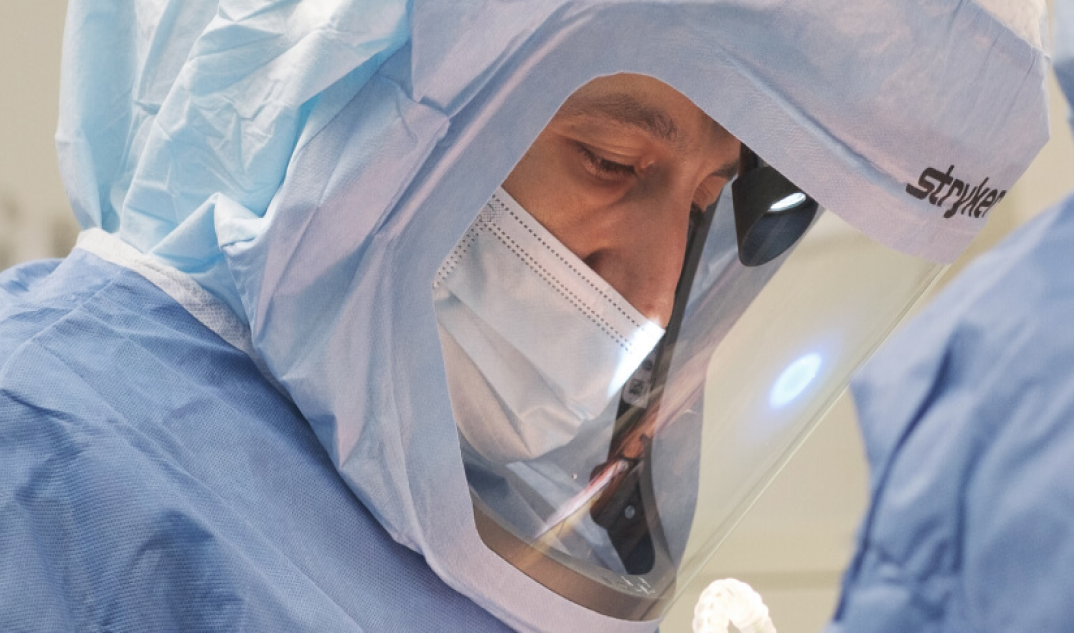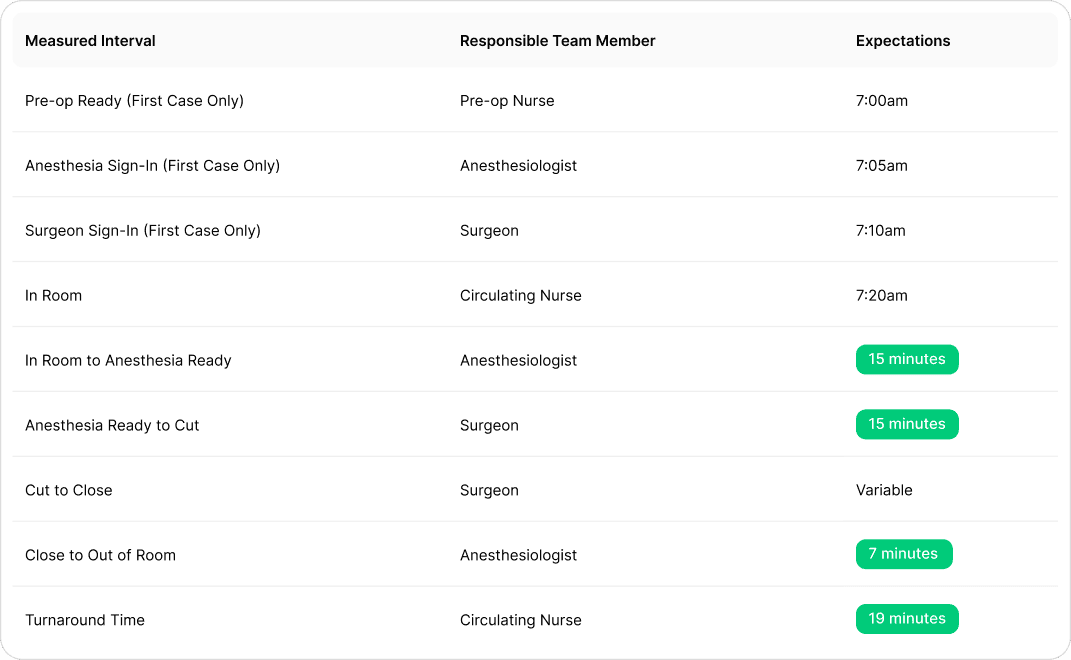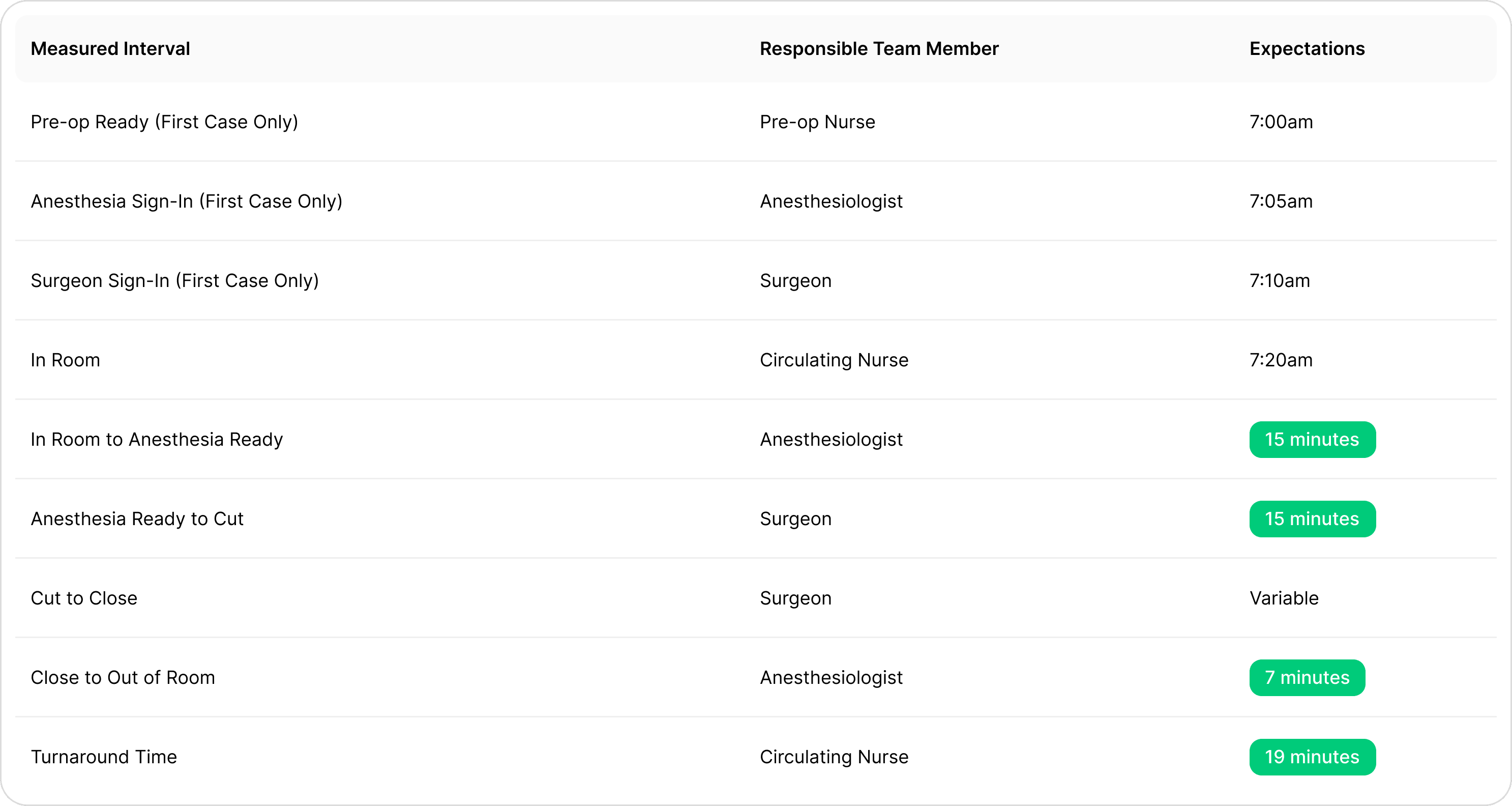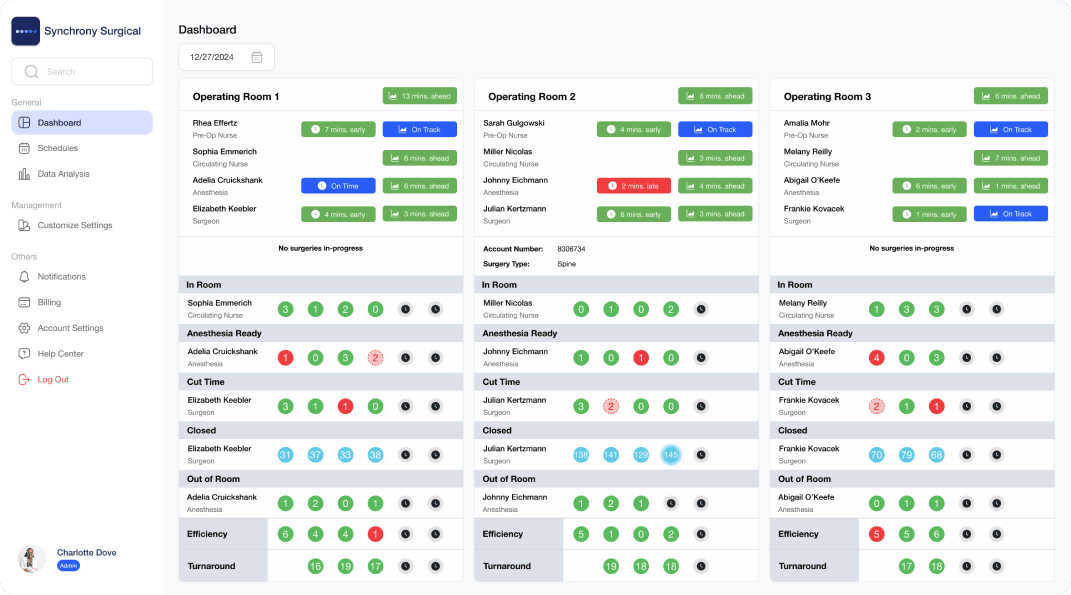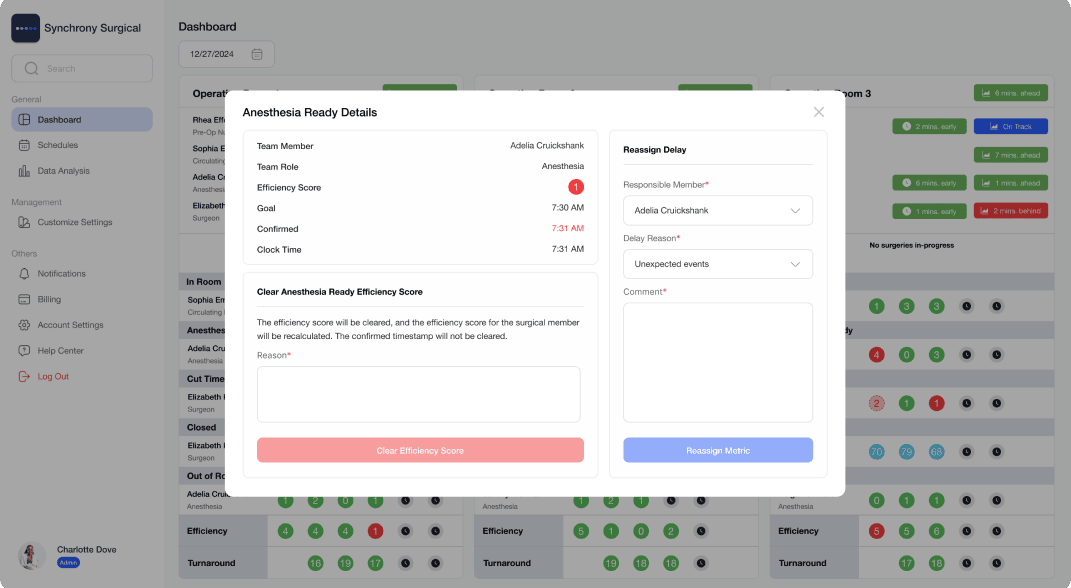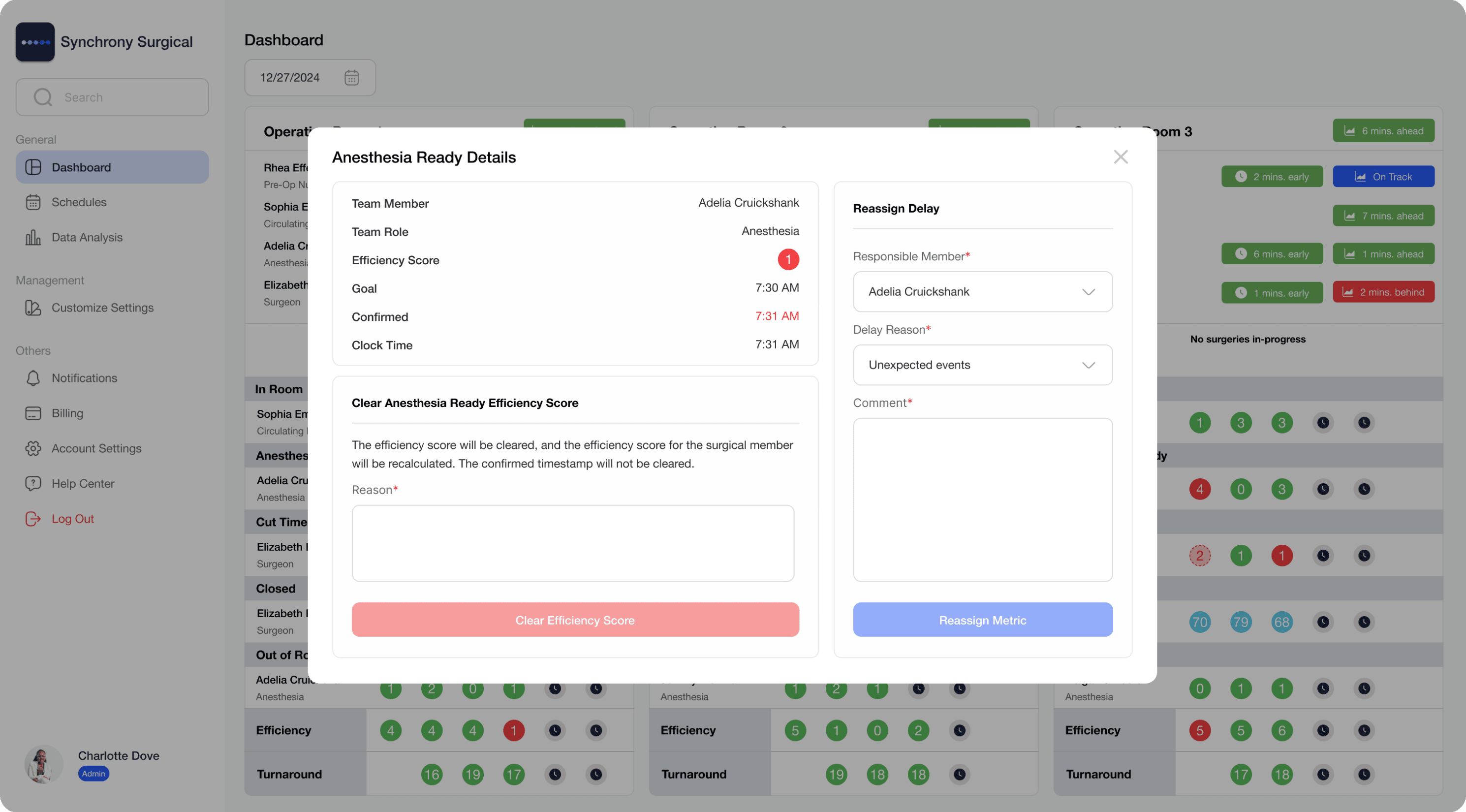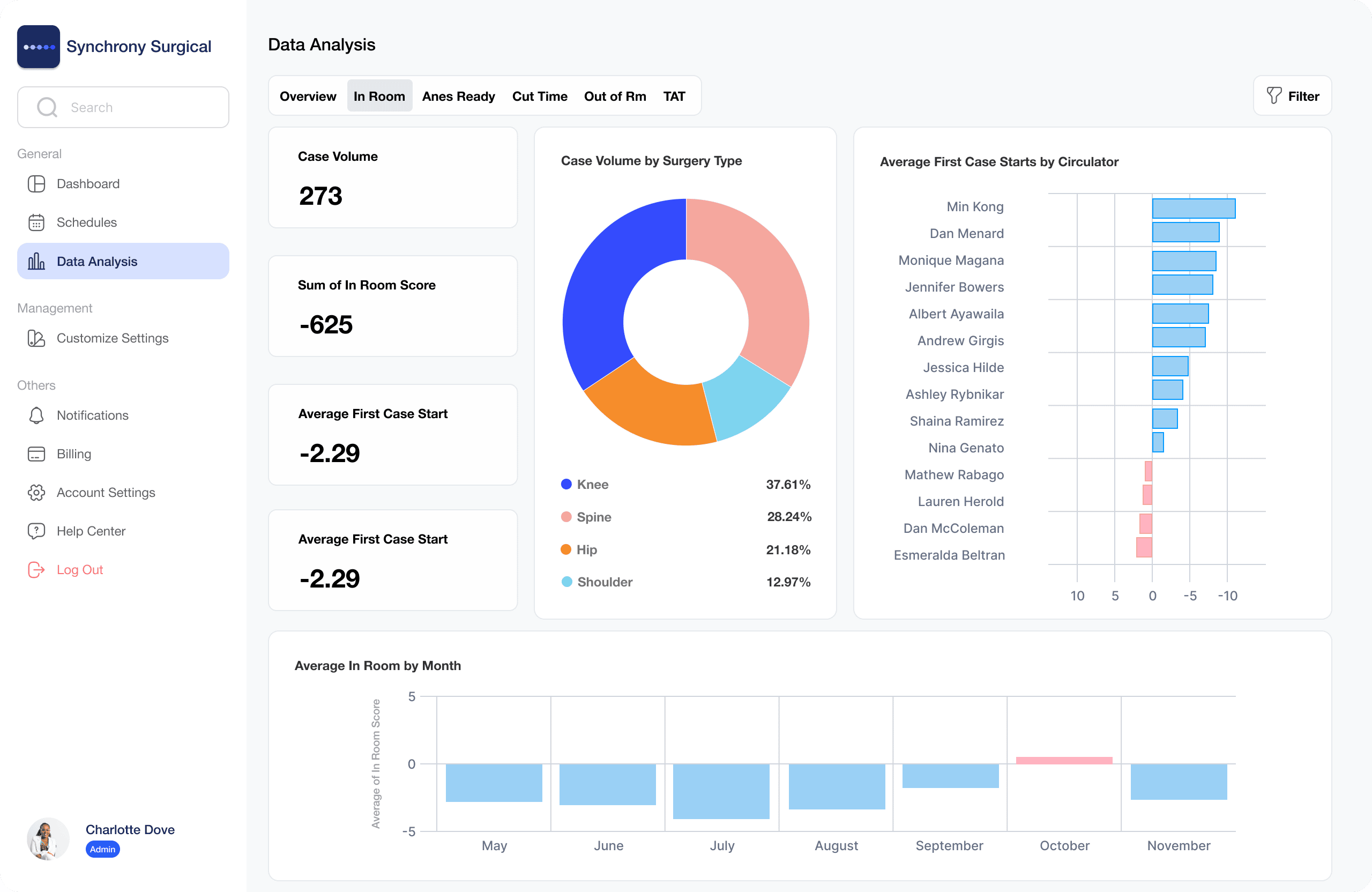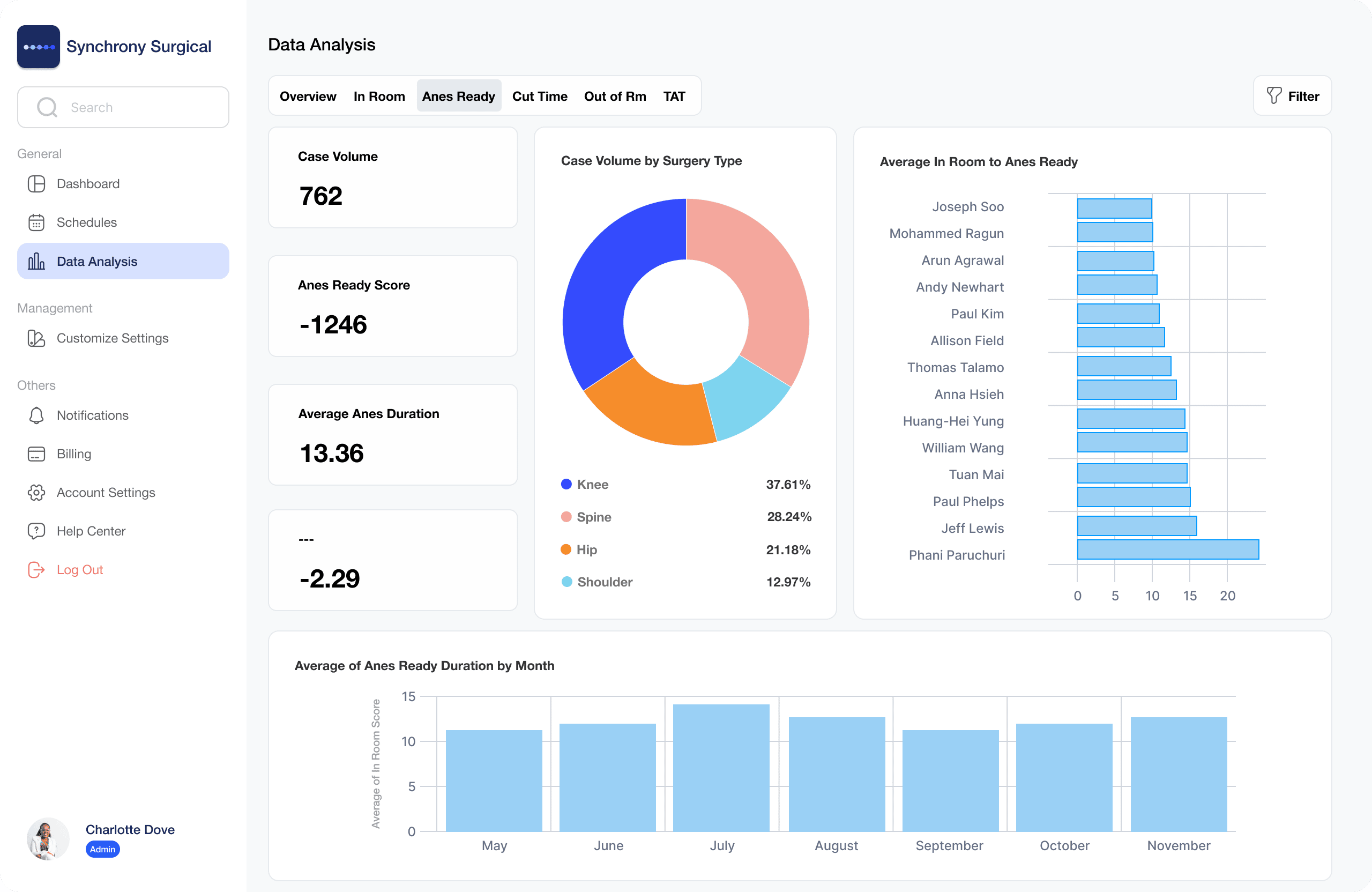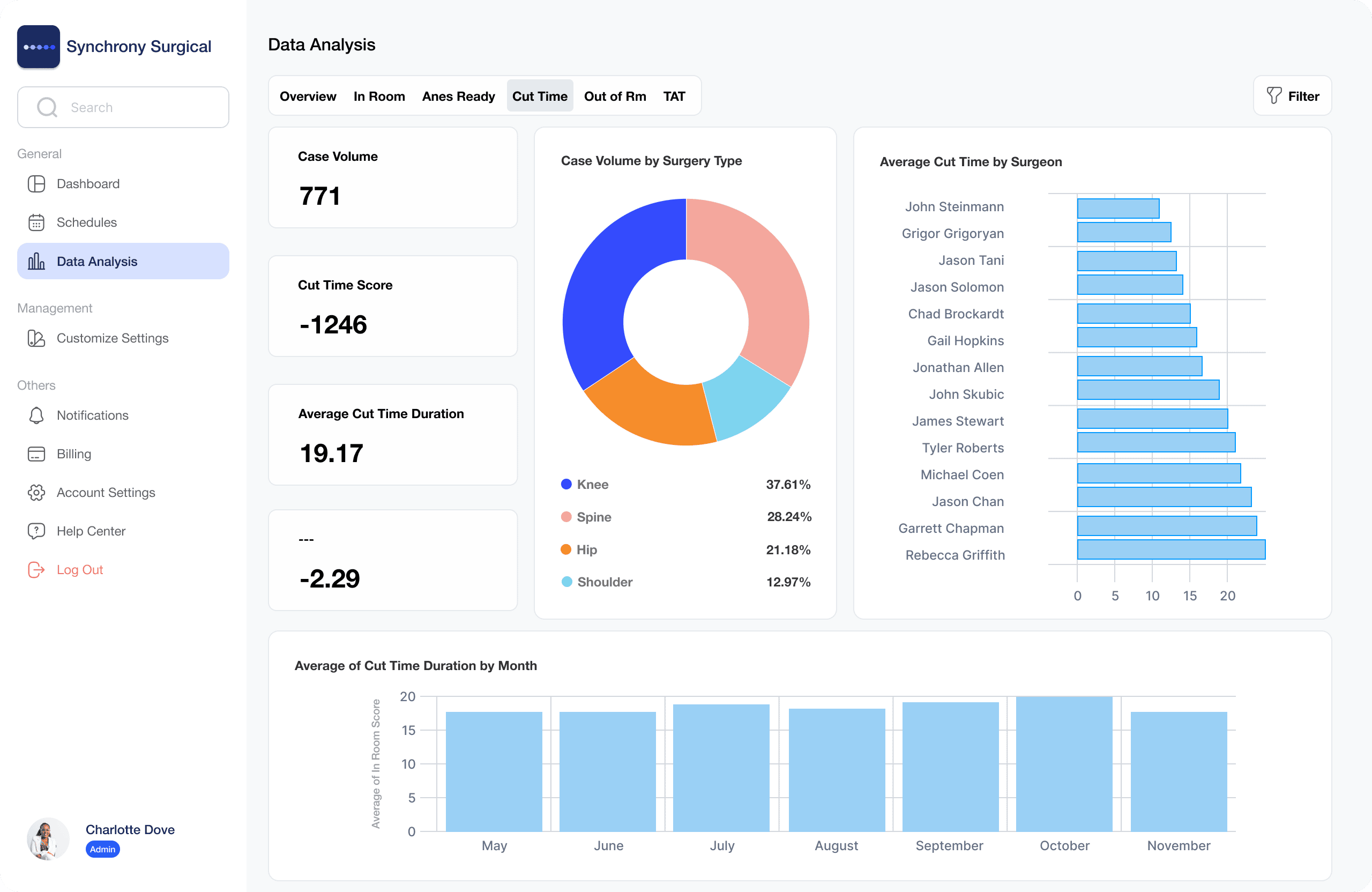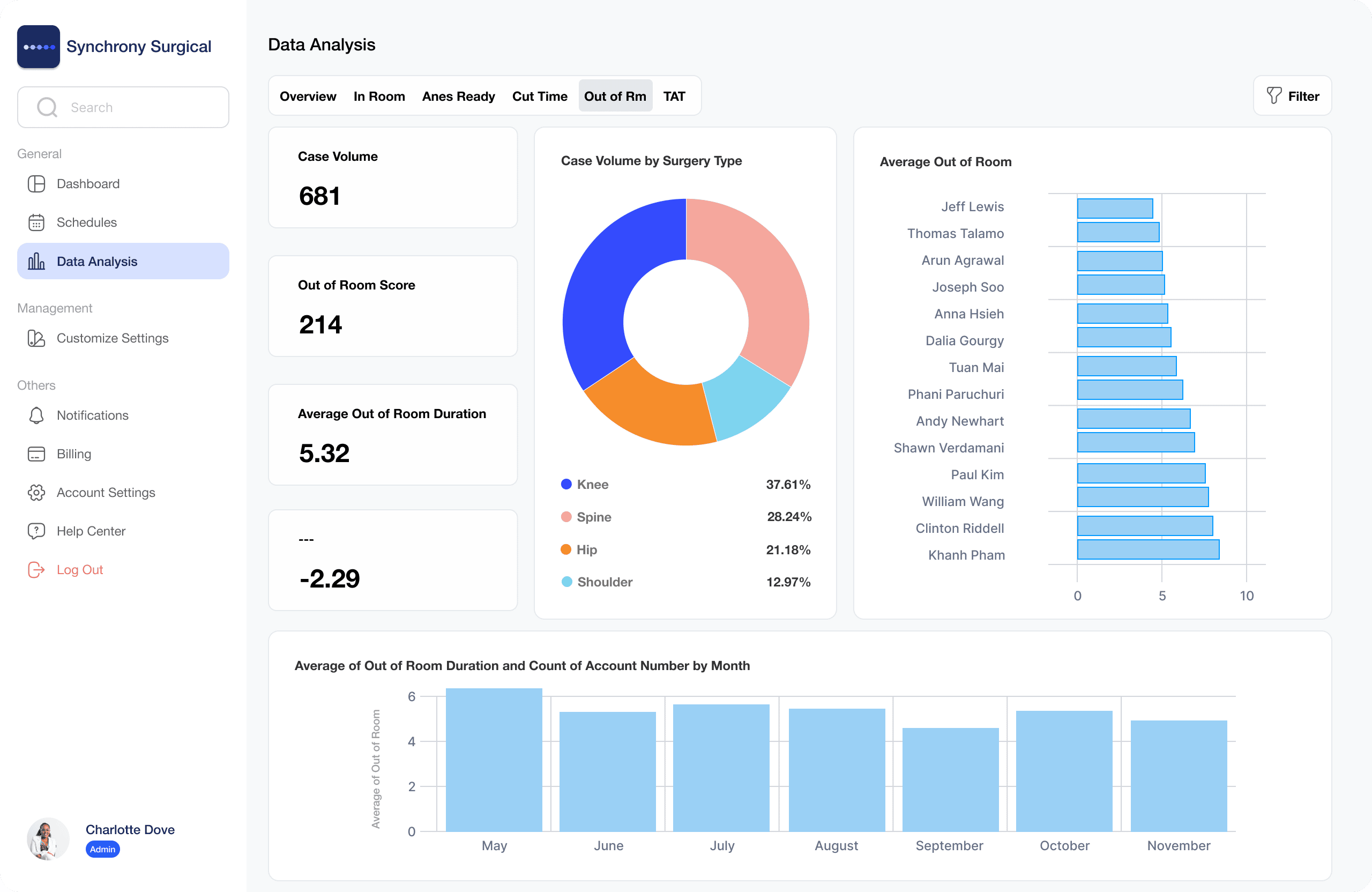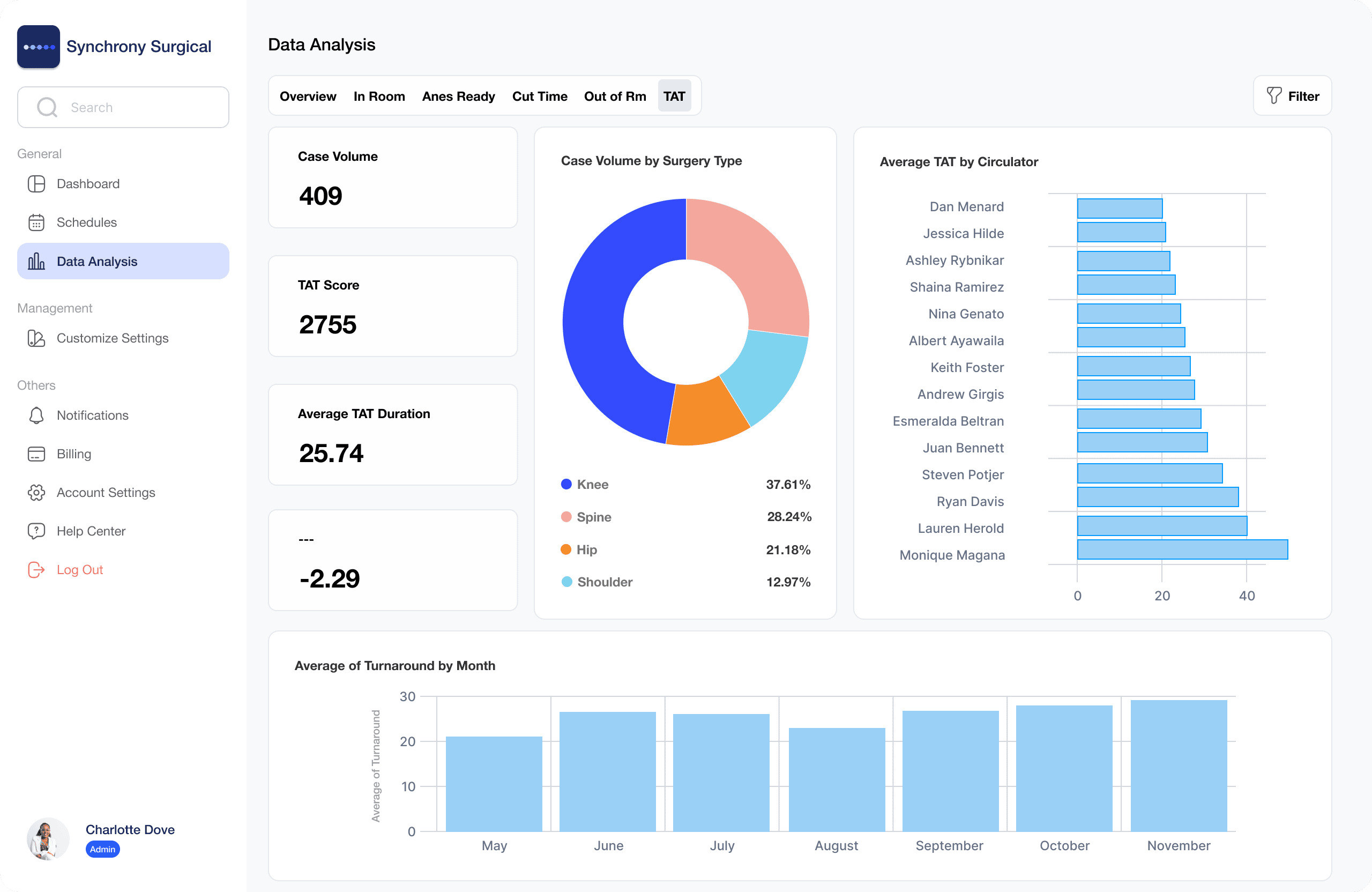Introduction
This statement by Peter Drucker emphasizes the importance of accurate data in managing and improving any organizational function.
The operating room in a hospital is the highest cost site of service, estimated, on average to cost $47/minute/room. Due to the reproducibility of surgical case flow, hospital management is afforded an incredible opportunity to improve efficiency and lower cost by applying technologies that provide accurate real-time measurement of performance.
Surgical case flow can be broken down into distinct measurable intervals, each with their own expectation for performance. First case of the day requires a defined time for Pre-op nursing to be ready, for anesthesia to sign-in and for surgeon to sign-in. Following these three metrics, the remainder of the first case and all subsequent cases require just 5 intervals to be documented in order to provide valuable data enhancing the efficiency for every case. These subsequent intervals include:


The vast majority of hospitals do not currently enjoy a means to effectively communicate expectations and measure performance on these important, reproducible intervals. For example, a Surgical Services area with 8 Operating rooms and an average of 5 cases per room requires management to communicate expectations and measure performance for 216 distinct intervals. Performing this manually in a manner that provides real-time data to management is not possible.
Following is a case study demonstrating how effective communication of expectations and measurement of performance led to remarkable improvements in physician and staff satisfaction and dramatic improvement in hospital economics.
